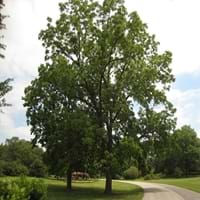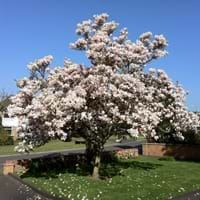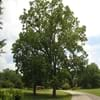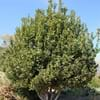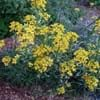Life Span
Perennial
Perennial
Origin
United States, Northeastern United States, Mid-Atlantic United States, Southeastern United States, North-Central United States, Central United States, South-Central United States, Texas, Canada
Hybrid origin
Types
Not Available
Gwillimia, Manglietia, Kmeria
Number of Varieties
Not Available
Habitat
bottomlands, Moist woods
Subtropical climates, Tropical regions
USDA Hardiness Zone
4-9
6-9
Sunset Zone
1a, 1b, 2a, 2b, 3a, 3b, 4, 5, 6, 7, 8, 9, 14, 15, 16, 17, 18, 19, 20, 21
Not Available
Habit
Oval or Rounded
Oval or Rounded
Flower Color
Yellow green
Purple, Pink, Light Pink, Rose
Flower Color Modifier
Bicolor
Bicolor
Fruit Color
Green, Chocolate
Brown
Leaf Color in Spring
Green
Green
Leaf Color in Summer
Green, Dark Green
Green
Leaf Color in Fall
Yellow, Dark Green, Yellow green, Gold
Green, Yellow green, Sandy Brown
Leaf Color in Winter
Not Available
Not Available
Plant Season
Spring, Summer, Fall
Spring, Summer
Sunlight
Full Sun
Full Sun, Partial Sun
Growth Rate
Medium
Medium
Type of Soil
Clay, Loam, Sand
Clay, Loam, Sand
The pH of Soil
Acidic, Neutral
Acidic, Neutral
Soil Drainage
Well drained
Well drained
Bloom Time
Late Spring, Early Summer
Spring, Late Spring
Tolerances
Not Available
Not Available
Where to Plant?
Ground
Ground
How to Plant?
Seedlings
Seedlings, Transplanting
Plant Maintenance
Medium
Medium
Watering Requirements
Average Water Needs, Requires regular watering
Prefer drip-irrigation instead of Over-head watering
In Summer
Lots of watering
Lots of watering
In Spring
Moderate
Moderate
In Winter
Average Water
Average Water
Soil pH
Acidic, Neutral
Acidic, Neutral
Soil Type
Clay, Loam, Sand
Clay, Loam, Sand
Soil Drainage Capacity
Well drained
Well drained
Sun Exposure
Full Sun
Full Sun, Partial Sun
Pruning
Prune in early spring, Prune when plant is dormant, Remove branches, Remove damaged leaves, Remove dead branches, Remove dead leaves, Remove dead or diseased plant parts
Prune if you want to improve plant shape
Fertilizers
Apply NPK fertilizer at the ratio of 6-24-24
Fertilize in late fall, fertilize in spring, Requires high amount of nitrogen
Pests and Diseases
Red blotch
Aphids, Bacterial Blight, Canker, Crown gall, Hoplia beetle, Leaf burn, Leaf spot, Mealybugs, Powdery mildew, Red blotch, Scorch, Soft scales, Thripes, Wetwood
Plant Tolerance
Not Available
Not Available
Flowers
Insignificant
Showy
Flower Petal Number
Not Available
Single
Fragrant Bark/Stem
Yes
No
Foliage Texture
Coarse
Coarse
Foliage Sheen
Glossy
Matte
Attracts
Birds, Butterflies
Not Available
Allergy
Anaphylaxis, Toxic
Not Available
Aesthetic Uses
Not Used For Aesthetic Purpose
Showy Purposes
Beauty Benefits
Good for skin
Treatment of Dark Spots
Environmental Uses
Air purification, Shadow Tree
Air purification
Medicinal Uses
Cancer, Coronary diseases, Cures constipation, Diarrhea, Diphtheria, High cholestrol, Immunity, Intestinal worms, Leukemia, Skin wounds, Sore throat, Syphilis, Use as a gargle
Alzheimer’s Disease, Anxiety, Cancer, Digestion problems, Liver problems, Menstrual Cramps, Respiratory Disorders, Weight loss
Part of Plant Used
Fruits
Whole plant
Other Uses
Used As Food, Used as Ornamental plant
Used as Ornamental plant, Used for its medicinal properties
Used As Indoor Plant
No
Yes
Used As Outdoor Plant
Yes
Yes
Garden Design
Feature Plant, Shade Trees
Feature Plant, Foundation, Shade Trees
Botanical Name
JUGLANS nigra
MAGNOLIA 'Alexandria'
Common Name
Black Walnut
Alexandria Magnolia, Magnolia
In Hindi
काले अखरोट के पेड़
हिम चम्पा
In German
Schwarz Walnussbaum
Magnolienbaum
In French
Noir noyer
magnolia
In Spanish
nogal negro
árbol de magnolia
In Greek
Μαύρη καρυδιά
Magnolia δέντρο
In Portuguese
nogueira preta
magnólia
In Polish
Czarny orzech drzewo
magnolia drzewa
In Latin
Niger walnut tree
Magnolia lignum
Phylum
Magnoliophyta
Magnoliophyta
Class
Magnoliopsida
Magnoliopsida
Order
Juglandales
Magnoliales
Family
Juglandaceae
Magnoliaceae
Clade
Angiosperms, Eudicots, Rosids
Angiosperms, Magnoliids
Tribe
Juglandeae
Not Available
Subfamily
Juglandinae
Not Available
Season and Care of Black Walnut and Magnolia Tree
Season and care of Black Walnut and Magnolia Tree is important to know. While considering everything about Black Walnut and Magnolia Tree Care, growing season is an essential factor. Black Walnut season is Spring, Summer and Fall and Magnolia Tree season is Spring, Summer and Fall. The type of soil for Black Walnut is Clay, Loam, Sand and for Magnolia Tree is Clay, Loam, Sand while the PH of soil for Black Walnut is Acidic, Neutral and for Magnolia Tree is Acidic, Neutral.
Black Walnut and Magnolia Tree Physical Information
Black Walnut and Magnolia Tree physical information is very important for comparison. Black Walnut height is 1,830.00 cm and width 1,830.00 cm whereas Magnolia Tree height is 460.00 cm and width 370.00 cm. The color specification of Black Walnut and Magnolia Tree are as follows:
Black Walnut flower color: Yellow green
Black Walnut leaf color: Green
Magnolia Tree flower color: Purple, Pink, Light Pink and Rose
- Magnolia Tree leaf color: Green
Care of Black Walnut and Magnolia Tree
Care of Black Walnut and Magnolia Tree include pruning, fertilizers, watering etc. Black Walnut pruning is done Prune in early spring, Prune when plant is dormant, Remove branches, Remove damaged leaves, Remove dead branches, Remove dead leaves and Remove dead or diseased plant parts and Magnolia Tree pruning is done Prune if you want to improve plant shape. In summer Black Walnut needs Lots of watering and in winter, it needs Average Water. Whereas, in summer Magnolia Tree needs Lots of watering and in winter, it needs Average Water.
